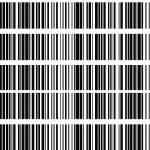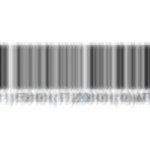Supply chains and the solutions used for managing them have become increasingly important as businesses become more global and interconnected. Globalization and digital technologies are changing business, especially as companies look to accelerate growth and expand into new markets. Additionally, medical device companies have the added pressure of complying with regulatory requirements like the FDA’s Unique Device Identification (UDI) system, while keeping operations running smoothly. That’s why more manufacturers are reevaluating their labeling process to achieve sustained compliance and keep up with growing market demands.
To manage these challenges, companies must create efficiencies in their supply chain and be able to address complex and ever changing supply chain dynamics. Companies that are open to innovation and those running enterprise operations in a collaborative fashion are the ones that will succeed in this new global supply chain landscape. This is why it’s critical to identify, understand and measure how labeling has a strategic impact on your supply chain and your company’s business growth. In order to be poised to sustain a competitive advantage in their market, companies must be aware of how labeling trends impact their supply chain now and in the future.
Trend 1: Labeling is Being Viewed as a Global Initiative
Approximately 65% of those surveyed claim that they recognize the necessity of having labeling addressed on a global scale. More than half of them work for companies that maintain labeling across a global operation, with five or more locations. Therefore, labeling, which intersects the supply chain at all levels, has become mission critical in meeting evolving customer requirements, keeping up with emerging regulations such as UDI, and avoiding disruptions. At the same time, as companies are looking at labeling on a global basis they must consider how to effectively deploy and maintain their labeling solutions, how to support enterprise wide labeling changes, and how to scale effectively as their businesses continue to grow and enter new markets.
There are three important considerations when thinking about labeling globally. First, companies should look to standardize their labeling for global consistency and accuracy. This offers seamless IT oversight company-wide and standardized labeling ultimately increases efficiency, while helping to eliminate the costly errors associated with the use of many different custom, homegrown and third-party solutions. Also, streamlined deployment and maintenance aids in scaling labeling globally. The focus, even when deploying solutions in a distributed fashion, is to maintain the ability to leverage common data sources, components and configurations across sites. Rather than manage multiple different systems, a standardized approach, which centralizes key sources of data, enables companies to simplify maintenance while supporting enterprise-wide labeling changes. Finally, multi-site deployment capabilities offer needed flexibility. This approach allows companies to realize the benefits of both centralized and decentralized deployment at the same time. With these multiple site deployment capabilities, companies can manage labeling centrally and ensure alignment with corporate standards while enabling geographically dispersed locations to run autonomously without relying on uninterrupted access to the central instance.
Trend 2: Labels Are Changing
The barcode label is simply not what it used to be. Companies that understand this will find themselves ahead of their competitors in meeting evolving customer demands. As customer and regulatory requirements increase, companies have been forced to make a record number of label changes and add more content to their labels. More than 80% of respondents reported that labeling requirements have become more complex in the last three years. To meet these increasing demands, labels today must be flexible and data driven to support the nearly limitless variability in requirements that exist. In many cases, the key is enabling business users with a simple mechanism to make label changes as well as integrating with enterprise applications to automate labeling processes. This increases efficiency, leverages existing investments, and reduces the need for countless permutations of label templates.
There are a variety of key developments that are driving change on labels at an unprecedented rate. First, labels are becoming more complex. Customers are more demanding than ever when it comes to the appearance, composition and content on labels. These companies are required to consistently pack more information on their barcode labels including product information, serialization numbers for traceability, industry-specific symbols, and pictograms for safety warnings. Also, rapid label change is important, with added pressure on suppliers to adapt quickly to their requirements while new regulations evolve all the time. To deal with this effectively, companies must enable business users to make label design changes. They must be able to leverage business logic-enabling label formatting and content to be changed dynamically. Additionally, the best way to manage the growing complexity in labeling is to integrate labeling with business applications. This allows organizations to leverage existing business processes and data, enabling them to standardize, improve accuracy, and offer consistency throughout their operations.
Trend 3: Labeling Is at the Heart of the Bimodal Supply Chain
As the complexity of a global supply chain increases, so too does the need to track goods and products that travel through it. Gartner indicates “Digital innovation will lead to a new approach to the supply chain.” They further state, “The divide between what the supply chain provides and what the enterprise needs is widening. Closing that gap requires a new, agile approach to investment in technology, leadership and talent.”1 More than 63% of respondents report that they are currently combining digital technology with traditional practices to improve supply chain operations. This intersection between physical and digital worlds within a supply chain is intended to “renovate legacy environments into a state that is fit for a digital world.”2 This approach allows manufacturers to gain “the best of both worlds” by embracing digital technology and new business models while continuing to use reliable physical processes that have worked well in the past. Labeling plays a key role in representing the bimodal supply chain, considering the label is a physical representation of digital information, which is often encoded in a barcode.
Labels offer a key source for curating digital information with solutions that render barcodes, integrate transactional data from enterprise applications, and apply serial numbers. IoT also impacts how businesses communicate and connect. Labels are vehicles for storing information, which can be easily accessed through scanning or sensing. This is an activity that’s becoming more prevalent in obtaining digital information in today’s bimodal supply chain. As companies are implementing IoT initiatives, they are relying on labeling solutions to manage global printer networks, update device settings, send print requests, and monitor status. It’s also important to note the rising significance of the Cloud. Enterprise applications are no longer physically being installed simply on premise. In today’s supply chain they are often being hosted and delivered in the cloud. Therefore, today’s labeling solutions must offer the flexibility of supporting cloud-based, on premise, and hybrid deployments as companies begin their migration to the cloud.








